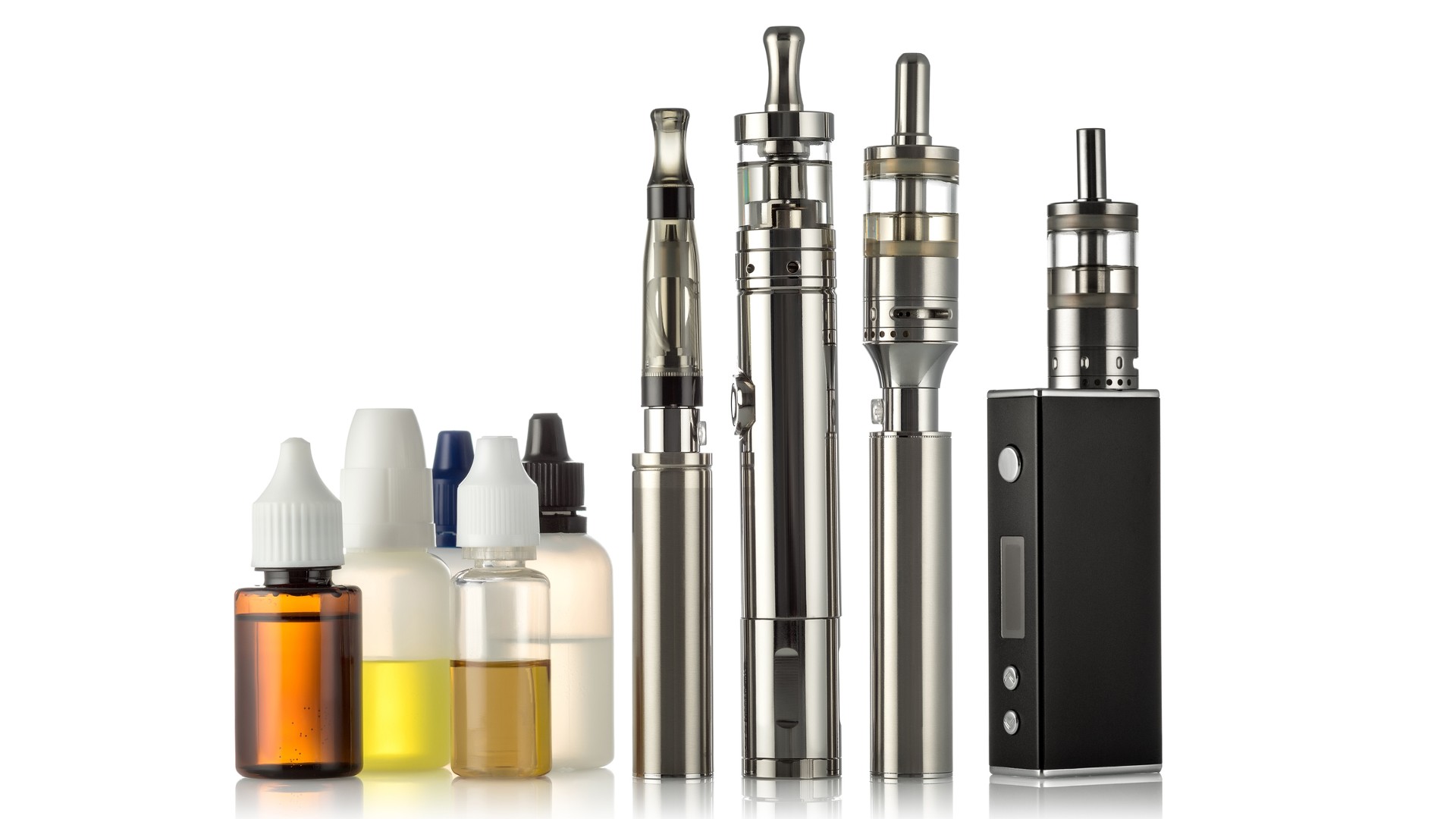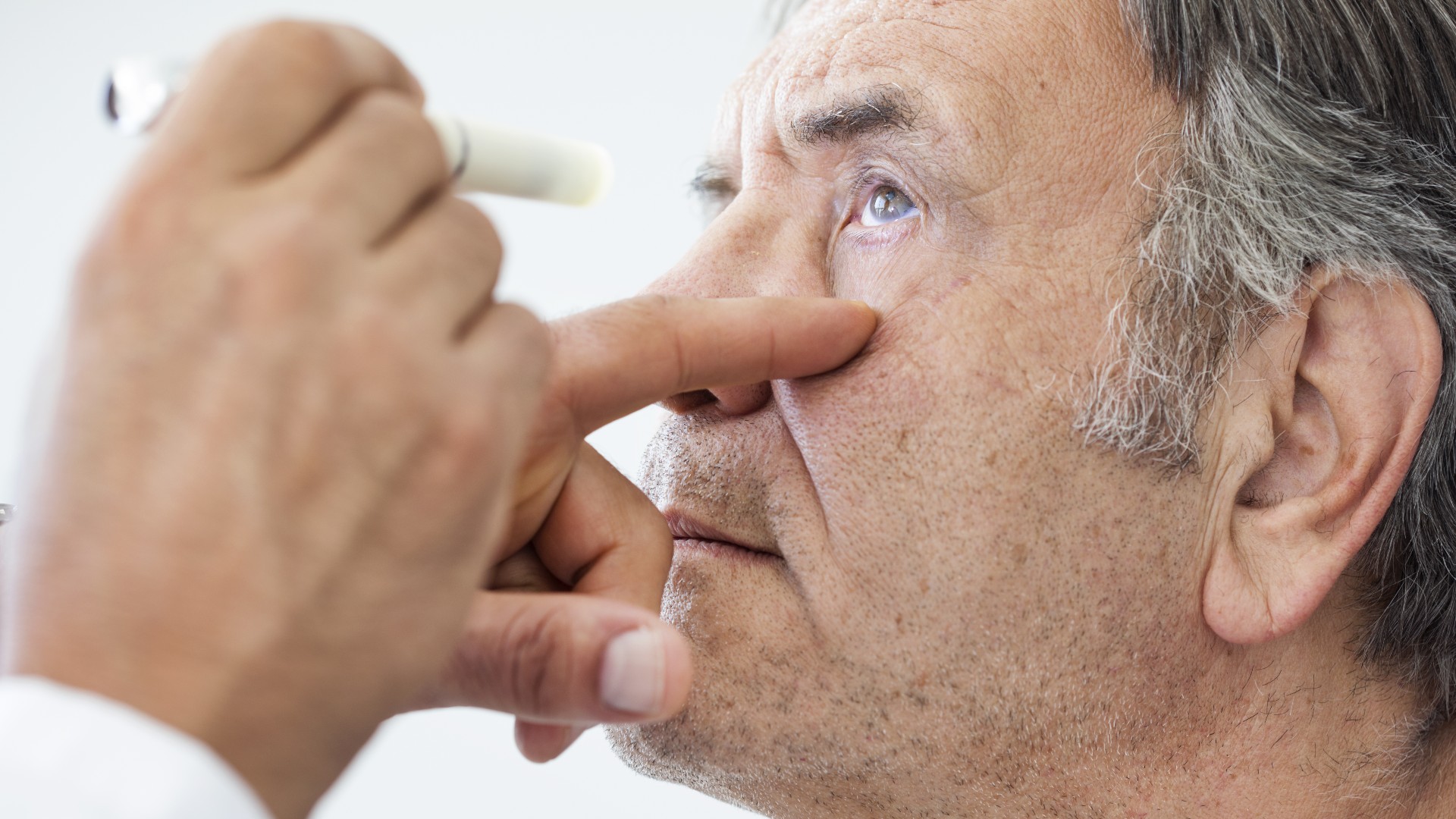Is vaping healthier than smoking?
Experts agree that all else being equal, it is better to vape than to smoke traditional cigarettes, but e-cigarettes come with their own risks.

Electronic nicotine delivery systems (ENDs), also known as electronic cigarettes, e-cigarettes or vape pens, were introduced in the early 2000s as an alternative to tobacco products. Instead of generating smoke, these pocket-sized devices deliver nicotine with an aerosol that looks like water vapor. But are vape pens "'healthier"' than cigarettes?
It depends. Experts told Live Science that they agree that "vaping" poses a small fraction of the risks of smoking. However, they stress that vape pens are not entirely safe, and we still do not know enough about the long-term effects of e-cigarette use.
It took decades of research to prove the harms of cigarettes — after being introduced to the U.S. in the early 19th century, cigarettes were first linked to lung cancer and other diseases in the 1940s and 1950s. Vape pens have been on the market for less than 20 years, and complicating the situation, some vape liquids and types of ENDs may be more harmful than others.
So how harmful are e-cigarettes? Here is everything we know so far about the potential health effects of vaping.
Smoking vs. vaping: Which is more toxic?
Cigarettes contain tobacco leaves and other additives, such as flavorings and preservatives, that, when burned, generate up to 7,000 different chemicals, including hydrogen cyanide, arsenic, lead and carbon monoxide, according to the American Cancer Society (ACS).
Dozens of these harmful chemicals are carcinogens, or cancer-causing substances, most of which come from the tobacco leaves themselves, rather than the additives, according to the ACS. Smoking cigarettes can increase the risk of several different types of cancer, as well as cause lung and heart disease. By contrast, nicotine, the addictive chemical in tobacco leaves, does not cause cancer, according to the WHO; that said nicotine can have other harmful effects on the body, in addition to being highly addictive.
Vape pens come in many shapes and sizes, but they all work based on the same principle: A battery-powered core heats and then rapidly cools a vape liquid, also called e-liquid or vape juice, creating a smoke-free aerosol that a user inhales, or "vapes." Vape juice can contain nicotine that's either synthetic or derived from tobacco, but it doesn't contain tobacco leaves or other chemicals found in the plant.
Get the world’s most fascinating discoveries delivered straight to your inbox.
Given both the lack of smoke and the lack of tobacco in e-cigarettes, people who completely switch from smoking to vaping tend to have lower exposure to toxic substances than do individuals who use cigarettes, Dr. Alayna Tackett, an assistant professor in the Division of Medical Oncology and the Center for Tobacco Research at the Ohio State University Wexner Medical Center, told Live Science by email.
However, vape pen liquids can contain other substances that may form carcinogenic compounds when heated, she said.
How toxic is vape liquid?
Most e-liquids consist primarily of nicotine, flavorings and solvents, which generate vapor and keep ingredients in suspension. However, the exact composition of a specific e-liquid will largely depend on the brand's manufacturing process, according to a 2021 review published in the journal Pharmacology & Therapeutics. This makes it difficult to assess exactly how toxic e-liquids are.
The two most common solvents used in e-liquids are propylene glycol and glycerol, which the Food and Drug Administration (FDA) generally recognizes as safe for human consumption. However, they may not be safe to inhale, the 2021 review states. Propylene glycol and glycerol are both airway irritants, meaning they may cause inflammation and other adverse reactions in the respiratory system, the review authors wrote.
Similarly, while flavorings used in e-liquids are generally safe to eat, no studies show they are safe to inhale as aerosols, and some may be dangerous to inhale, according to the review. For example, the buttery-flavored compound diacetyl was linked to a severe respiratory disease called bronchiolitis obliterans — a condition nicknamed "popcorn lung" because workers at a microwave popcorn factory developed the disease after inhaling diacetyl.
Both solvents and flavoring agents may generate toxic byproducts, such as formaldehyde, a substance classified as a probable human carcinogen, the review authors wrote. Inhaling formaldehyde in high doses can be harmful, and a 2017 study in the journal PLOS One found that concentrations of formaldehyde from heated vape liquid solvents may exceed acceptable limits established by the U.S. Environmental Protection Agency. In theory, this may put ENDS users at a higher risk of cancer, but this cancer risk has not been clearly demonstrated in research.
As noted previously, most e-liquids also have varying levels of nicotine. Because tobacco smoke has a relatively low nicotine concentration and is harsh on the lungs, it is difficult to overdose on the addictive chemical when smoking cigarettes. Vape pens, however, can contain high concentrations of nicotine, and users can often dial up the amount of nicotine delivered in a single puff.
As a result, vaping may increase the risk of nicotine overdose, the review authors noted. Nicotine overdose, or nicotine poisoning, is a condition whose symptoms include muscle twitching, fainting, vomiting, heart palpitations, seizures and difficulty breathing. If it triggers severe enough symptoms, nicotine poisoning can sometimes be deadly, according to Mount Sinai.
A 2014 study by the CDC revealed a significant uptick in nicotine vape pen-related calls to poison control centers — the number of calls increased from one per month in September 2010 to 215 per month in February 2014, while the number of calls involving cigarettes remained steady over that time.
Can vape liquid get contaminated?
Vape pens themselves can also contaminate e-liquids. Repetitive heating of the device's core can cause nickel, copper, iron and other metals to slip into the aerosol; breathing in such metals could lead to an increased risk of cancer, kidney damage, heart disease and neurological disorders, according to the Pharmacology & Therapeutics review.
The risk of metal contamination may be higher for closed pod ENDs, which have replaceable e-liquid cartridges, than in disposable vape pens designed to be used for a while and then tossed. And the metal contamination from a pod type e-cigarette may change across its lifetime, according to a 2023 study in the journal Toxics. Researchers found that the longer the device was used, the higher were the concentrations of hazardous metals in its vapor.
In addition, black-market vaping products containing THC (the psychoactive ingredient in marijuana) have sometimes been contaminated with vitamin E acetate, a synthetic form of vitamin E. Likely introduced by manufacturers as a way to dilute the THC content of vape juice, vitamin E acetate was linked to a major outbreak of vaping-related illness that hit the U.S. in 2019.
What diseases have been linked to e-cigarettes?
People who smoke cigarettes would be better off switching to e-cigarettes if they are still using nicotine and haven't had success with other substitutes, like nicotine gum. However, for those who have never smoked, it remains unclear what the health implications might be from vaping.
The evidence is limited and we do not have studies showing the long term impact of vaping, Hazel Cheeseman, deputy chief executive of Action on Smoking and Health, a charity set up by the Royal College of Physicians in the U.K. to promote smoking abstinence, told Live Science by email.
That said, preliminary research suggests that vaping may raise the risk of certain health conditions.
Lung injury and lung disease
E-cigarettes may lead to irreversible lung damage and lung disease, according to the American Lung Association.
For example, vaping can sometimes cause E-cigarette- or Vaping Product-Associated Lung Injury (EVALI), according to a 2020 review published by The American Journal of Medicine. Symptoms of EVALI include shortness of breath, cough, chest pain, nausea, abdominal pain, fever and chills. Up to one-third of patients admitted to an intensive care unit with the condition require mechanical ventilation, the review authors noted. The cause of EVALI is not fully understood, though it appears that vitamin E acetate plays a central role. However, other compounds found in both nicotine- and THC-containing vape liquids may also contribute to the condition, according to Yale Medicine.
In addition, e-cigarette use has been linked to lung diseases, including pneumonia, respiratory bronchiolitis-associated interstitial lung disease (an inflammatory disease previously seen mainly in heavy tobacco smokers), and hypersensitivity pneumonitis (a type of allergic reaction in the lungs), according to a 2022 review published in the journal Annual Review of Physiology.
Vape pen use may also weaken the lungs' immune defenses and increase the risk of infections with pathogens, including the influenza virus and Streptococcus pneumoniae bacteria, according to a 2022 review published in the journal Cureus.
Lastly, studies suggest that e-cigarettes may aggravate symptoms of asthma in adolescents with the condition, according to a 2023 review published in the journal Current Opinion in Allergy and Clinical Immunology. However, more research is needed to understand this effect.
Eye disorders
Exposure to e-cigarette vapor may also lead to eye disorders, according to a 2021 review published in the journal International Ophthalmology. Studies suggest that e-liquid substances such as aldehydes and flavorings may damage the eyes' tear film and lead to inflammation, worsening of the sight and reduced blood flow to the eye, according to the article. However, more research is needed to understand what exactly is causing these effects.
Scientists are getting closer to understanding the link between e-cigarette use and eye disorders. For example, a 2021 mice study published in the Journal of Molecular Medicine found that full-body exposure to vape vapor may prompt the immune system to release more cytokines - chemical messengers that induce inflammation - which then accumulate in the superficial parts of the eye responsible for light absorption, as well as nourishment and protection of the deeper eye tissues. Animals exposed to e-cigarettes had a particularly high level of cytokines interleukin 1 beta (IL-1β) and tumor necrosis factor alpha (TNF-α), compounds that may damage the delicate barrier that regulates the transport of nutrients between the eye and the bloodstream, the study authors wrote.
Tooth decay
Very little research has been done on the impact of vaping on oral health. However, preliminary evidence suggests that people who vape are more at risk of developing cavities than those who do not vape or smoke, Dr. Sam Jethwa, the vice president of The British Academy of Cosmetic Dentistry, told Live Science by email.
When people inhale during vaping, the sugar in some vaping liquid sticks to the teeth, causing damage to the tooth enamel. Vape liquid may also change the microbiome of the mouth, making it more hospitable to decay-causing bacteria, Jethwa told Live Science. Vaping also appears to encourage tooth decay in areas where it usually does not occur, such as the bottom edges of front teeth rather than the deep grooves of the back teeth, he said.
Vaping can also decrease saliva production and cause dry mouth, which is a known driver of cavities. "Saliva provides a natural lubrication for the mouth and helps to neutralize the acid that can decay tooth enamel," Jethwa said.
DNA damage and cancer
We have not seen any evidence to date that vaping contributes to cancer, Dr. Irem Patel, consultant integrated respiratory physician and honorary senior lecturer at King's College London In England, told Live Science by email. However, it can take decades of follow-up and complex study designs for such increased risk to show up in the data.
A first-of-its-kind study published in 2023 in the journal Nicotine & Tobacco Research compared the extent of DNA damage in the cells that line the inside of the mouth between vape pen users who never smoked cigarettes, cigarette smokers who did not vape, and non-users. Researchers found that people who vape and those who smoke cigarettes may show similar levels of DNA damage, and such DNA changes can be a precursor to cancer. Sweet, mint and menthol flavored e-liquids appeared to inflict the most damage, the study found. Still, more research is needed to understand this correlation.

Anna Gora is a health writer at Live Science, having previously worked across Coach, Fit&Well, T3, TechRadar and Tom's Guide. She is a certified personal trainer, nutritionist and health coach with nearly 10 years of professional experience. Anna holds a Bachelor's degree in Nutrition from the Warsaw University of Life Sciences, a Master’s degree in Nutrition, Physical Activity & Public Health from the University of Bristol, as well as various health coaching certificates. She is passionate about empowering people to live a healthy lifestyle and promoting the benefits of a plant-based diet.











